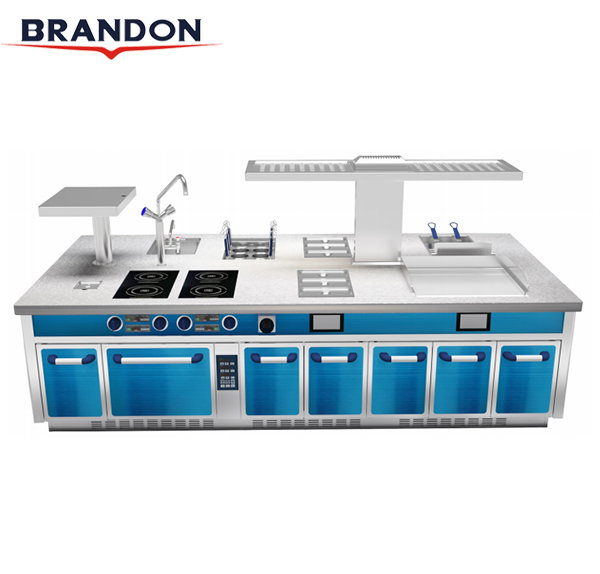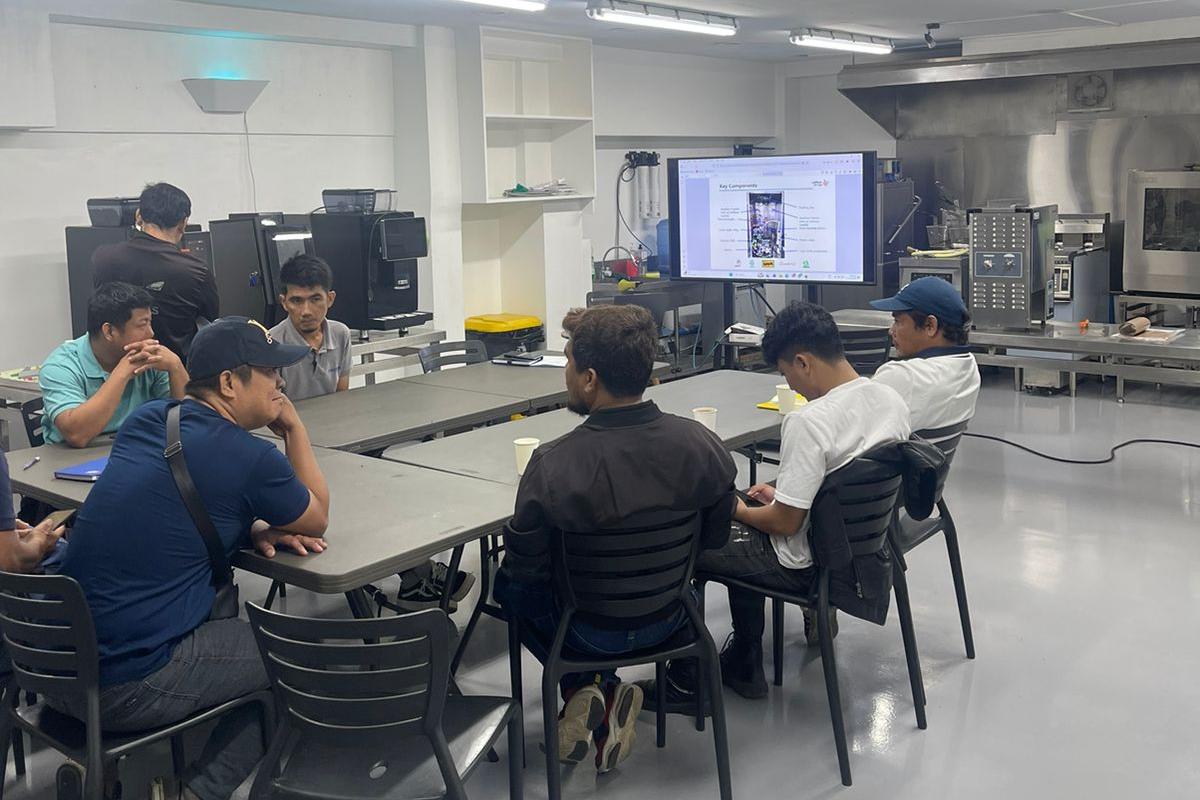Cooking Block
Brandon just joined the ranks of the very few manufacturers with the capability of pulling together the cooking block, which is aesthetic appealing and sturdy.
-
Appearance and workmanship
The table top is well polished to vibration finish to reflect less light which projects a calm and elegant touch. Weld marks and screws are properly concealed. Tight manufacturing tolerance so gap between modules are kept to the minimum, a lot smaller than our competitors.
Cooking block is lined up with perforated foot panels for aesthetic consideration and ventilation.
Description
Color of your choice
Our colored stainless steel are coated with a metallic vapor from titanium , which has an even more superior property than pure stainless steel. Of thickness about 0.7 μm, the coating not only renders vivid color and liveliness to the cooking block, it also serves as an additional corrosion and wear resistance.

-
-
Safety features
Suffice to say that for nearly two decades Brandon has been manufacturing all cooking modules separately for the western world, including fryer, gas range, griddle, barbecue and pasta cooker. Brandon is one of the few manufacturers that masters the cooking production technology in both gas and electric forms. Making them separately is one thing, combine them all in one unit is another. It is of vital importance that heat and flue gas accumulated inside must be properly dissipated and displaced .
-
Ventilation
Behind each cooking module, at least one ventilating fan is equipped to take away the operating heat of cooking module. There are up to 10 fans drawing cold air from the girdle plate and displace the hot air into the flue.
Sensors are built in to monitor the fans’ operation. If any one of them if not working, it shows on the control panel. -
Thermal sensors
Thermal sensors are deployed to measure the ambient of every cooking module as well as the flue. So, the chefs in the kitchen are well aware of whether the temperature of any particular area is building up.
-
Sturdiness
→ The table top is made of 304 grade stainless steel.
→ A choice of 3 mm table top with state of the art finishing (4 mm or 5 mm thick table top is available at customer’s request).
→ 40 mm thick door panel filled with foam for reinforcement and a solid touch.
→ 3 mm thick door hinge for robustness and durability -
Combination of modules
Worth noting is that Brandon has been for 15 years manufacturing all modules to CE (EN203 or EN60335) and AGA (AS4563) standard.
Kitchen designer is afforded the flexibility of multiple combinations to realize their design with different modules
→ Open burner (gas or induction) with oven (gas or electric)
→ Griddle (gas or electric)
→ Charbroiler (gas or electric)
→ Fryer (gas or electric)
→ Pasta cooker (gas or electric)
→ Bain marie (electric)
-




